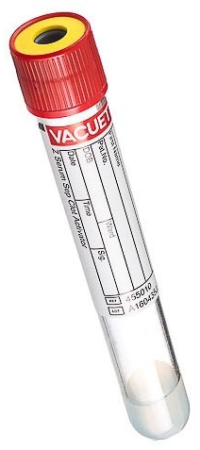
Test Code: 7137
CPT Code(s): 83001, 83002
Methodology: Immunoassay
Clinical Significance: FSH and LH are secreted by the anterior pituitary in response to gonadotropin-releasing hormone (GNRH) secreted by the hypothalamus. In both males and females, FSH and LH secretion is regulated by a balance of positive and negative feedback mechanisms involving the hypothalamic-pituitary axis, the reproductive organs, and the pituitary and sex steroid hormones. FSH and LH play a critical role in maintaining the normal function of the male and female reproductive systems. Abnormal FSH levels with corresponding increased or decreased levels of LH, estrogens, progesterone, and testosterone are associated with a number of pathological conditions. Increased FSH levels are associated with menopause and primary ovarian hypofunction in females and primary hypogonadism in males. Decreased levels of FSH are associated with primary ovarian hyper-function in females and primary hypergonadism in males. Normal or decreased levels of FSH are associated with polycystic ovary disease in females. In males, LH is also called interstitial cell-stimulating hormone (ICSH). Abnormal LH levels with corresponding increased or decreased levels of FSH, estrogens, progesterone, and testosterone are associated with a number of pathological conditions. Increased LH levels are associated with menopause, primary ovarian hypofunction, and polycystic ovary disease in females and primary hypo-gonadism in males. Decreased LH levels are associated with primary ovarian hyperfunction in females and primary hyper-gonadism in males.
Alternative Name(s): Follicle stimulating hormone and Luteinizing hormone; FSH/LH, Serum; FSH/LHS; Follicle stimulating hormone and Interstitial cell stimulating hormone
Supply: #T157 Red/Yellow SST 8mL
Preferred Specimen: Serum
Preferred Volume: 2mL
Transport Container: Serum Separator Tube (SST)
Transport Temperature: Room Temperature
Specimen Stability: Room Temperature: 7 days
SPECIAL INSTRUCTIONS: For prepubertal children test codes 36087 (FSH, pediatrics) and 36086 (LH, pediatrics) are recommended
Rejection Criteria:
- Hemolysis
- What are hemolyzed specimens?
- Hemolysis occurs when the red cells are damaged during sample collection causing them to rupture. Hemolyzed serum or plasma is pale pink to red rather than the normal clear straw or pale-yellow color.
- What causes a specimen to be hemolyzed?
- Mixing tubes too vigorously
- Placing tubes in the refrigerator without allowing 30 minutes at room temperature for complete clotting
- Exposure to heat or in a refrigerator that is too cold
- Using a needle with too small of a bore necessary for the venipuncture
- Using too large a tube when using a butterfly needle
- Not allowing sufficient time for alcohol to dry on puncture site
- Leaving the tourniquet on for longer than one minute
- How can hemolyzed specimens be prevented?
- For routine collections, use a 20–22-gauge needle
- Do not remove the needle from the vein with the vacuum tube engaged
- Do not collect a specimen in a hematoma
- Do not centrifuge the specimen for a prolonged period of time
- Draw the sample gently and evenly
- What are hemolyzed specimens?
- Specimens exceeding stability
- Specimens other than serum
- Unlabeled or improperly labeled specimens
For additional supply or collection device information, please contact DLO's Customer Service at (800) 891-2917, option 2.
The CPT codes provided are based on AMA guidelines and are for informational purposes only. CPT coding is the sole responsibility of the billing party. Please direct any questions regarding coding to the Payor being billed.
